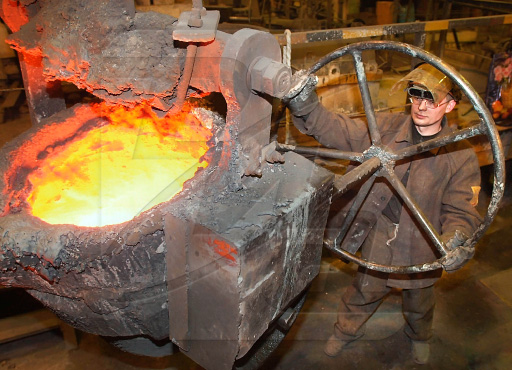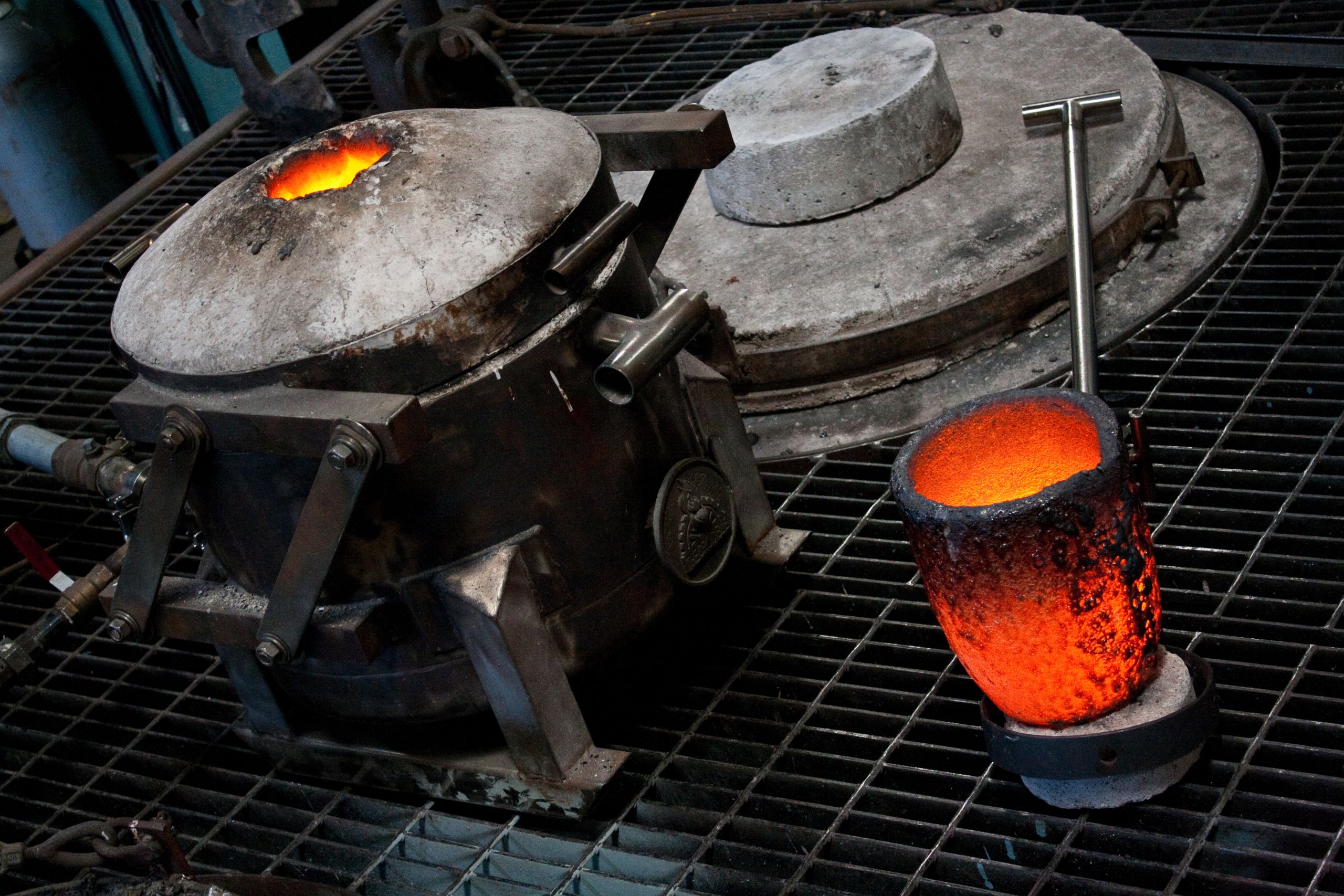A Comprehensive Overview to the Providers Provided by Casting Foundry Experts
Casting Foundry experts play an essential function in the manufacturing market. They supply a wide variety of solutions that cover the entire Casting procedure, guaranteeing precision and quality. From mold style to metal putting methods, each facet is carefully crafted. Quality assurance actions assure that standards are satisfied. Nonetheless, the nuances of these procedures usually go unnoticed. Understanding the complete array of services can disclose their influence on different markets and applications.
Understanding Casting Processes
Casting procedures might vary substantially, they all share an usual goal: changing raw products into accurate, usable forms. These procedures incorporate different techniques, including sand spreading, die casting, and financial investment spreading, each matched to details applications and products. In sand spreading, mold and mildews are created from sand and a binding representative, allowing for flexibility in design and size. Pass away spreading, on the various other hand, uses high-pressure shot to develop complex shapes from liquified steel, guaranteeing high precision and repeatability. Investment Casting involves creating a wax pattern, which is covered in ceramic material, permitting superior surface finish and dimensional accuracy. Despite the method chosen, the fundamental concepts of heating, pouring, and solidifying materials stay regular. By understanding these procedures, producers can choose the most suitable method for their needs, making sure effectiveness and quality in manufacturing
Pattern Making Methods
Pattern making techniques play a crucial duty in the Casting procedure, functioning as the blueprint for the end product. These techniques include developing a precise reproduction of the desired thing, which is after that utilized to develop molds. Different products, such as metal, wood, or plastic, can be employed to craft patterns, relying on the complexity and demands of the Casting task.
Amongst the common techniques are strong patterns, which are straight and simple, and split patterns, which permit even more complex designs by separating the pattern right into two halves. Furthermore, core patterns are used to create internal cavities within spreadings.
Developments in modern technology have actually introduced digital pattern making and 3D printing, enabling quicker manufacturing and higher precision (Casting Foundry). These advancements improve the efficiency and accuracy of the Casting process, ensuring that the final items fulfill stringent high quality criteria while minimizing lead times
Mold Layout and Design
Mold and mildew layout and engineering are vital components in the Casting procedure, influencing the overall quality of the final item. The style procedure includes careful factor to consider of material choice requirements and the execution of simulation and testing methods to guarantee peak performance. Recognizing these aspects is important for achieving effective and effective mold and mildew production.
Style Refine Overview
The layout procedure for casting Foundry services is a critical phase that encompasses mold and mildew layout and design. This phase starts with understanding the details demands of the part to be generated, including measurements, resistances, and overall capability. Engineers use computer-aided design (CAD) software program to produce thorough models, making certain accuracy in the mold's geometry.
Partnership between customers and engineers is essential, as it aids to deal with any type of prospective design difficulties at an early stage. Once the initial design is authorized, models may be created for screening objectives. This iterative procedure allows for improvements and changes, guaranteeing the final mold and mildew meets all specs. Ultimately, efficient mold layout and design are crucial for achieving high-grade Casting results while optimizing manufacturing performance.
Material Selection Criteria
When determining the appropriate products for mold and mildew design and design, it is necessary to assess numerous elements that influence the performance and durability of the Casting process. Trick considerations consist of thermal conductivity, which affects warmth transfer; mechanical strength, guaranteeing the mold and mildew withstands pressure; and resistance to put on and rust, which prolongs mold and mildew life. Furthermore, the compatibility of the material with the liquified steel is crucial to protect against responses that may endanger the spreading. Cost-effectiveness and ease of machining also play significant roles in material option. Inevitably, selecting the appropriate products straightens with the details requirements of the project, making certain reliable production and high-quality spreadings. Correct assessment of these standards will certainly bring about suitable mold performance and resilience.
Simulation and Testing Strategies
Utilizing advanced simulation and testing strategies is crucial for enhancing mold and mildew style and engineering. These approaches allow casting Foundry professionals to predict exactly how molds will certainly perform under different problems, consequently decreasing product waste and reducing lead times. Limited component evaluation (FEA) and computational liquid characteristics (CFD) are commonly utilized to evaluate architectural stability and liquid flow within molds. By mimicing different scenarios, engineers can identify prospective concerns prior to physical manufacturing starts. Furthermore, prototype screening permits for real-world validation of layout choices, ensuring that molds meet performance specs. Integrating these strategies not only improves the accuracy of mold and mildew designs yet also adds to the overall efficiency and cost-effectiveness of the Casting procedure, resulting in higher-quality end products.
Metal Pouring Techniques
Pouring molten steel into mold and mildews is a vital step in the Casting process, influencing the final item's high quality and structural stability. Various metal pouring techniques are used by casting foundries to accomplish suitable results. One of the most typical methods consist of gravity putting, where metal streams into the mold exclusively intoxicated of gravity, and pressure putting, which utilizes used stress to assure full mold dental filling. In addition, vacuum cleaner pouring is used to eliminate air pockets and enhance surface area coating, while centrifugal putting uses rotational force to disperse the steel equally within the mold. Each method supplies unique benefits relying on the type of metal, mold design, and desired features of the end product. Foundry experts assess these variables meticulously to pick the most suitable pouring method, assuring that the Casting satisfies the needed specs and efficiency standards. Recognizing these methods is important for accomplishing top notch spreadings in different industries.
Warmth Therapy and Ending Up Procedures
Warmth therapy and completing processes play a crucial function in improving the mechanical homes and surface area quality of castings. These processes entail a series of regulated heating and cooling cycles, which alter the microstructure of the steel, causing enhanced toughness, ductility, and resistance to wear. Typical warm treatment techniques include quenching, tempering, and annealing, each customized to attain certain product features.
Complying with warmth treatment, completing procedures such as machining, grinding, and brightening are used to accomplish accurate dimensions and excellent surface finishes. These actions are required for minimizing surface roughness and improving aesthetic appeal, making sure that the last product fulfills the required specifications. In addition, finishing procedures can entail coating applications, which offer rust resistance and enhance sturdiness. Generally, the combination of warm therapy and completing processes is vital for supplying high-quality spreadings that satisfy market criteria and client expectations.
Quality Assurance and Screening
Quality assurance and screening are crucial parts in the Casting Foundry procedure, making certain that each product meets recognized criteria for efficiency and reliability. Shops carry out strenuous testing methods throughout manufacturing to recognize flaws and examine product homes. This consists of visual inspections, dimensional checks, and non-destructive testing approaches such as ultrasonic or radiographic exams.
Making use of innovative technology, consisting of digital dimension systems, enhances accuracy in spotting prospective problems. In addition, material examples are often subjected to mechanical screening, examining solidity, ductility, and strength. These evaluations are vital for confirming that spreadings can withstand operational tensions in their intended applications.
Additionally, adherence to industry criteria, such as ASTM and ISO accreditations, plays a substantial function in quality control. By maintaining comprehensive paperwork of assessment results, foundries can give customers with self-confidence in the integrity and sturdiness of their cast items, eventually promoting lasting blog collaborations based on trust fund.
Personalized Casting Solutions and Applications
The significance of customized remedies in casting factories can not be overemphasized, as markets increasingly seek elements that satisfy details demands. Custom Casting remedies permit the manufacturing of complex geometries and special products, satisfying diverse fields such as vehicle, aerospace, and power. Foundries make use of sophisticated technologies, including 3D printing and computer-aided layout, to create models and final items that straighten with customer specifications.
Applications vary from elaborate engine parts to specialized machinery elements, highlighting the flexibility of custom castings. By teaming up very closely with customers, foundries can guarantee that each Casting not just meets useful demands but also follows sector requirements. This modification causes enhanced performance, minimized waste, and boosted performance in manufacturing procedures. Inevitably, personalized Casting remedies stand for a strategic advantage for services intending to introduce and maintain competitive edges in their particular fields.

Frequently Asked Concerns
What Products Can Be Used in Casting Procedures?
The materials used in casting processes consist of metals like iron, light weight aluminum, and bronze, as well as non-metals such as ceramics and plastics. Each material provides unique properties fit for various applications and production requirements.
Exactly how Lengthy Does a Normal Casting Task Take?
The period of a normal Casting project differs significantly, usually varying from numerous days to weeks. Aspects influencing this timeline consist of style complexity, material option, and the details Casting techniques used by the factory.
What Industries Advantage Most From Casting Providers?
The markets that profit most from casting solutions consist of aerospace, vehicle, building, and marine. Each industry uses casting to produce accurate components, boosting efficiency and performance in their respective applications, thereby driving technology and development.
Can You Supply Prototypes Before Complete Production?

What Is the Regular Expense Array for Casting Providers?
The common price array for casting services differs considerably, usually affected by factors such as material production, kind, and intricacy quantity. Usually, costs can vary from a couple of hundred to a number of thousand dollars per task.
These procedures encompass different approaches, consisting of sand spreading, die casting, and investment spreading, each suited to details applications and products. Mold and mildew style and engineering are imp source important parts in the Casting process, affecting the total top quality of the last product. When determining the suitable products for mold and mildew style and design, it is crucial to evaluate numerous variables that influence the performance and longevity of the Casting process. Putting liquified steel right into molds is a crucial action in the Casting process, influencing the last product's quality and structural honesty. Quality control and testing are vital parts in the Casting Foundry procedure, guaranteeing that each item meets established standards visit for efficiency and integrity.